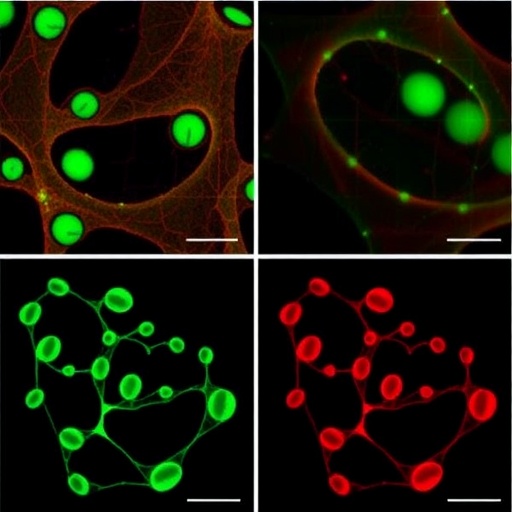
Credit: Source: Sonja-Verena Albers
The biologist Dr. Tessa Quax has identified the structure of a central protein used by archaea to determine the direction to swim. Archaea are single-cell life forms without a nucleus. She also studied which molecular mechanisms are involved in the transmission of signals from the archaea's environment to its motility structure. Quax, who is a researcher in the lab of Prof. Dr. Sonja-Verena Albers at the Institute of Biology II of the University of Freiburg, has published her research in the scientific journal Proceedings of the National Academy of Sciences of the USA.
Archaea represent one of the three domains of life, along with bacteria and eukaryotes, the latter of which are organisms that have a nucleus as well as organelles. Archaea are the direct ancestors of eukaryotes, but are similar to bacteria in structure and organization. They thus represent a very important link in the evolution theory. Archaea can adapt to extreme living conditions, such as hot sulfur springs or extremely salty lakes, and they can also be found in the oceans and in our intestines.
Microorganisms are dependent on being able to move actively: If their living conditions worsen, they are able to move to somewhere more favorable. Like bacteria, archaea are able to sense environmental stimuli and to respond by making a directed movement, called chemotaxis. For this purpose, during evolution they have developed a unique motility structure that is unlike that of bacteria and eukaryotes. Quax is investigating how outer stimuli are transferred via the chemotaxis system to the motility structure.
The organelle responsible for movement in bacteria, the flagellum, has been studied in detail for more than 30 years. The flagellum consists of as many as 50 proteins, which are assembled according to a predetermined order. The result is a whip-like structure (hence its Latin name) of protein threads that functions like a propeller. Anchored to the cell wall and equipped with an "engine" at its tip, it can rotate, which is how the bacteria swims. Until recently, it was believed that archaea also use flagella to move. However, the team in Albers's lab demonstrated that there are significant structural differences in the motility organelles of bacteria and archaea, and that the archaea's organelle should be renamed "archaellum."
Tessa Quax and her collaborators have also demonstrated that the central chemotaxis protein in archaea fits exactly to the archaeal motility structure. This means that the structural makeup of this protein is different between archaea and bacteria, although it fulfills the same function in both. This also corresponds with the observation that bacteria and archaea have different motility structures. This research thus offers insight into why archaea are able to successfully colonize new habitats.
###
Original publication:
Tessa E. F. Quax, Florian Altegoer, Fernando Rossi, Zhengqun Li, Marta Rodriguez-Franco, Florian Kraus, Gert Bange, and Sonja-Verena Albers: Structure and function of the archaeal response regulator CheY. In: PNAS 2018. http://www.pnas.org/content/early/2018/01/19/1716661115
Contact:
University of Freiburg
Institute of Biology II – Microbiology
Media Contact
Dr. Tessa Quax
[email protected]
49-761-203-2631
Original Source
https://www.pr.uni-freiburg.de/pm-en/press-releases-2018/incentive-to-move




